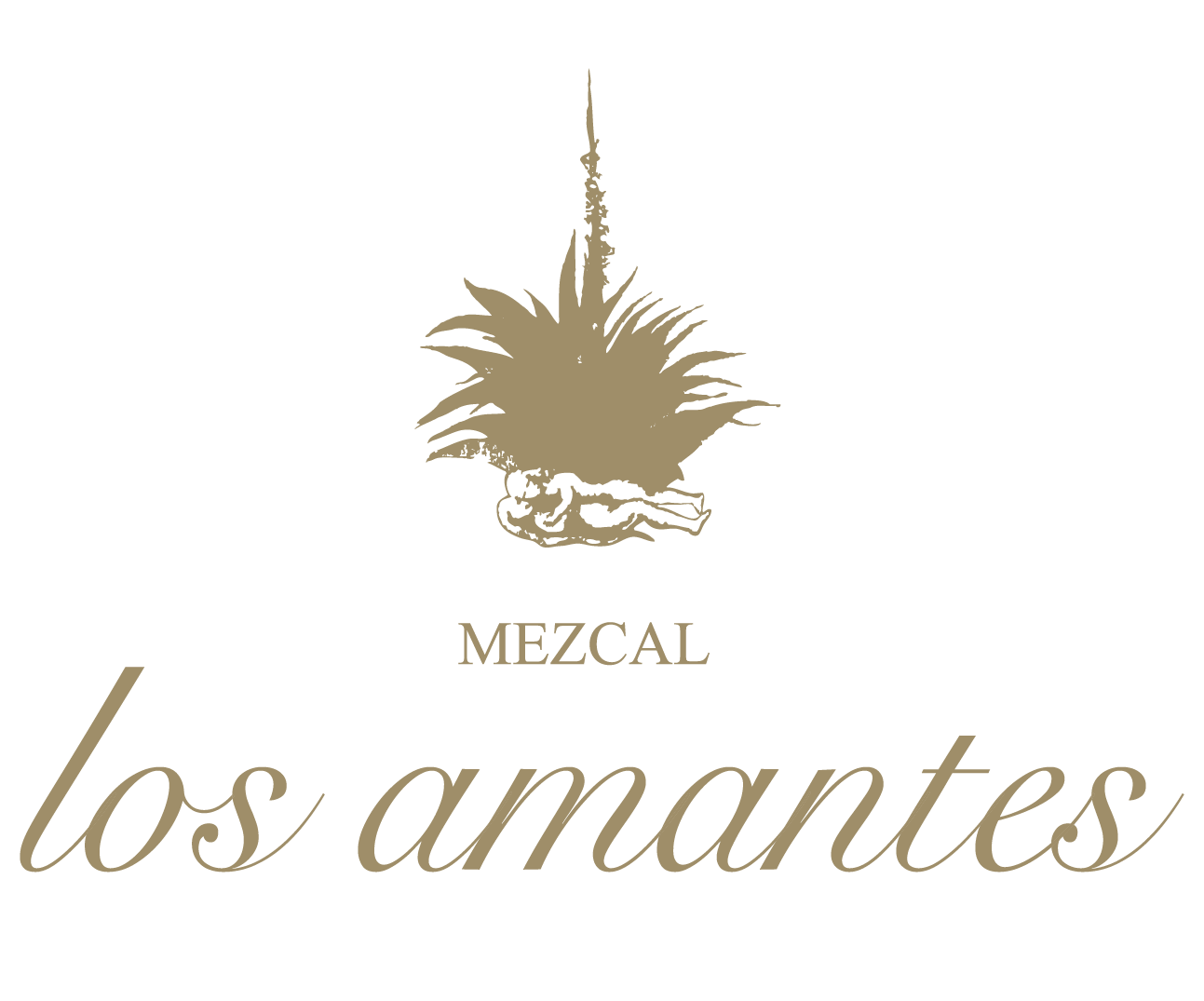Harvest
Harvesting agave is the first step in the process of making mezcal. We only use ‘capon’, which means we only use mature plants that have started to grow a quiote (flowering stalk).
The quiote is cut to allow the plant to store its sugars in its core (piña), rather than using them to make flowers and seeds. Once the quiote has been cut, the plant rests in the ground several months before we collect the plants.
We know the plant is ready for collection because the leaves (pencas), at the base of the plant, will start to dry out and the base will turn a golden brown. Preparing the plants to bring back to the distillery requires cutting and shaving the leaves from the core with a machete, before using a coa to remove the core from the ground.
Cook
We can not consume agave in its raw state, therefore the next step of the process is bring it to it’s cooking. This process transforms fructans into fructose, a monosaccharide suitable for fermentation.
Cooking takes place in a pit or ‘conical’ oven dug into the ground. A fire laid set using a hard wood and stones are set on top of this.
The stones are left to heat up for several hours before adding begasso (recycled agave fibres from previous mezcal productions) to protect the agave from being burnt by the hot stones.
Then the agave will be placed into the oven, piled as high as the pit is deep. The oven is covered using canvas and earth to hold in the heat and steam. It is important for this covering to be comprehensive so that no oxygen can enter the cooking process, as this will also cause the agave to burn.
Once the agave is cooked, it should be soft and sweet, ready for crushing.
Crush
Crushing is carried out using a mill known as tahona.
This is made up of an 800kg stone wheel attached to an axis and often pulled by a horse.
Breaking up the cooked agave creates more surface area to be accessed by the yeast during fermentation.
Ferment
Fermentation happens in large wooden vats known as tinas. During this part of the process, sugars contained in the agave cores are transformed into ethanol by means of alcoholic fermentation, the metabolic route of yeast.
For this process to be effective, the capacity of our tinas is 1000 litres, containing between 380 and 420 kilos of ground agave, along with its juices and warm water.
Heat effects the speed of this aerobic process, causing it to slow down if the external temperature gets too low.
Distill
Distillation separates alcohol from water by tasking advantage of the different boiling points.
Ethanol, has a lower boiling point than water, only 78.5 ° C. The still is heated at this temperature, causing the ethanol to evaporate, leaving behind the water and other impurities.
A 500 litre stainless steel pot is where the fermented matter and juices (teach) are added. It is buried inside a cement structure, under which there is a gas burner that generates the necessary heat. This must be carefully regulated.
Above the pot there is the bell shaped ‘montera,’ that captures the alcohol vapours. A tube then carries these vapours to the cooling section, where there is a coil immersed in cold water. Inside the coil the vapours condense.
As this first distillate emerges it is divided into three jugs of decreasing alcohol content. The tips come out fist and have the highest grade of alcohol, while the second two jugs, known as xixe, are lower.
Refine
As mentioned earlier, the second two jugs from the first distillation have a low alcohol grade, which means they need to be refined.
In this second stage we use a 300 litre copper pot. The process is similar to the first round, but using xixe obtained from the first distillation, rather than the fermented agave matter.
The effect of this refining creates a high grade alcohol known as the ‘puntas’ and water known as ‘colas’.
For the Amantes non-aged espadin (joven) we do a third distillation to create the smoothest product possible.
Finally liquids produced in the various stages of distillation need to be mixed to reach the optimum alcohol level. This is described adjusting the “mezcal composition”.
Our final product has identifiable fruity and slight smoky tones; citrus, sweetness from the cooked agave. End notes are slightly metallic and herbaceous.
Age
Our product lines include Reposado and Añejo mezcal. To achieve our unique profile we age our mezcal in French oak barrels. This adds new elements to the flavour and gives the liquid a darker colour.
Our reposado is stored for 6 to 8 months and the anejo for at one year.
Bottle
Finally the packaging operation is performed. This is done in different specific packages of what is going to be packaged: young mezcal (white), aged or rested.
It should be noted that in the elaboration of mezcal under the artisan system there is no talk of a complete standardization of processes since they are based on the raw material used. However, it is important to generate a protocol that allows to establish continuous improvement goals in the short, medium and long term.
Knowing the process of producing mezcal is the first step to implement controls that improve product quality, as well as to reduce losses during processing, efficient and reduce pollution processes, in terms of some advantages. It should be noted that in the elaboration of mezcal under the artisan system there is no talk of a complete standardization of processes since they are based on the raw material used.
However, it is important to generate a protocol that allows to establish continuous improvement goals in the short, medium and long term.
